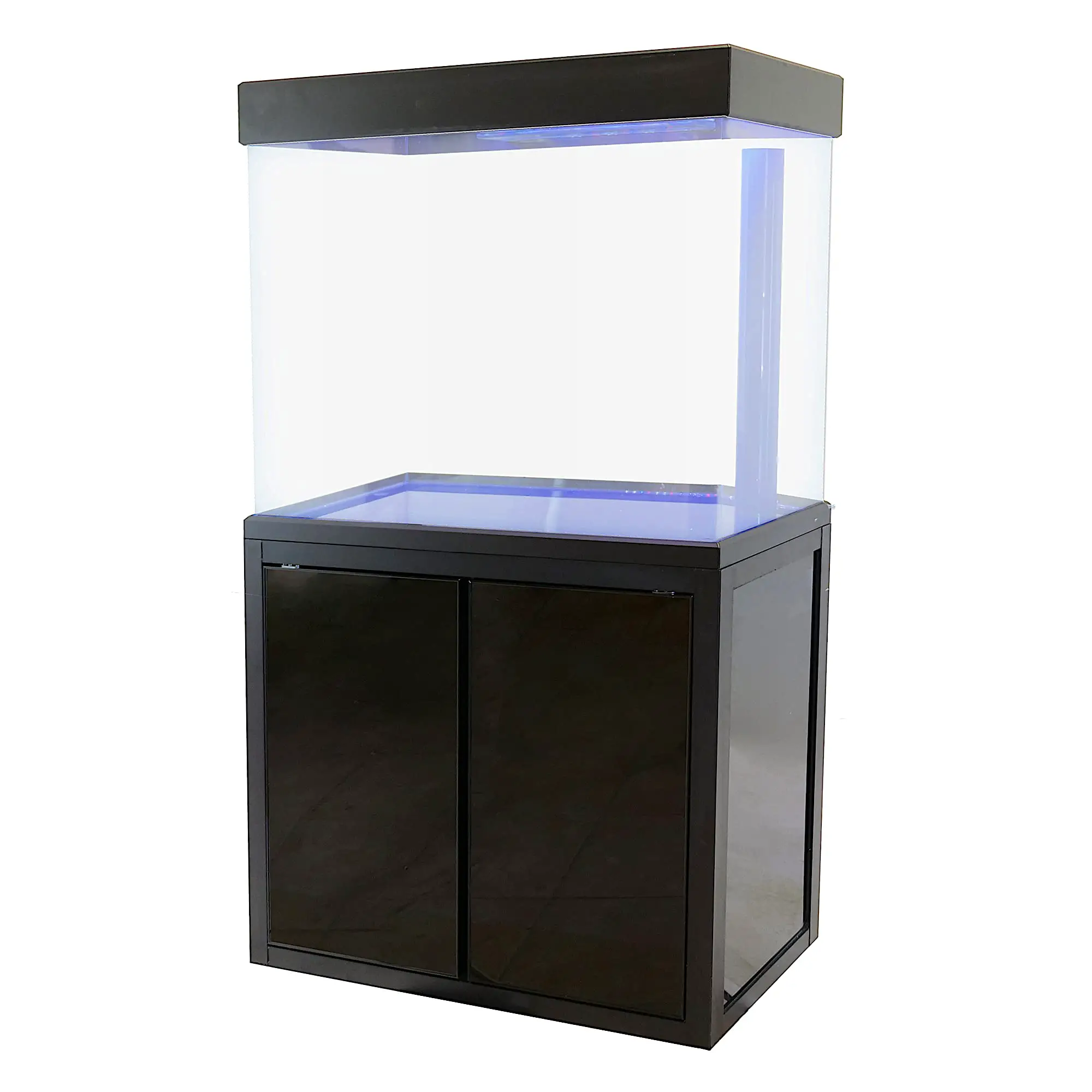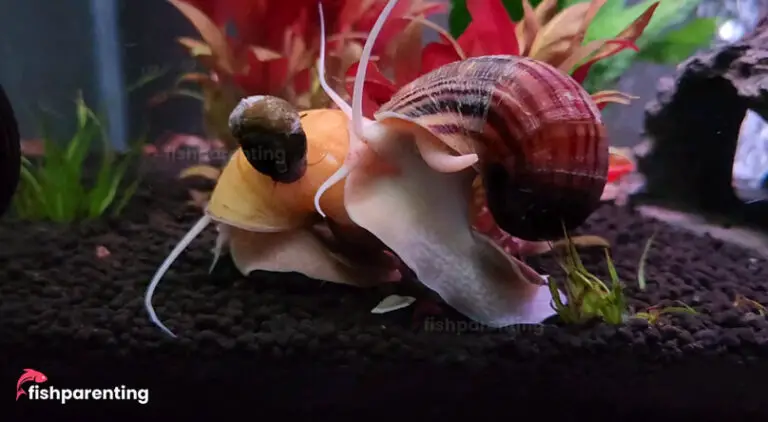The Splendid World of 50 Gallon Fish Tank
Embarking on the journey of setting up a 50 gallon fish tank is an exciting endeavor for both novice and experienced aquarists alike.
This sizable tank offers a unique opportunity to create a captivating underwater ecosystem while being manageable enough for a home environment.
In this guide, I’ll explore the benefits, setup, and maintenance of a 50 gallon fish tank, ensuring you have all the knowledge needed to start your aquatic adventure.
Benefits of a 50 Gallon Fish Tank
A 50 gallon tank is an excellent choice for those looking to expand their aquatic horizons.
It provides ample space for a variety of fish and plant species, creating a diverse and thriving aquatic community.
The larger volume of water in such a tank also contributes to a more stable environment, with less susceptibility to rapid temperature changes and chemical fluctuations.
Moreover, the aesthetic appeal of a 50 gallon tank is undeniable, offering a generous canvas for your aquascaping skills.
Dimensions and Capacity
A standard 50 gallon tank typically measures around 36 inches in length, 18 inches in width, and 19 inches in height, providing a substantial area for your aquatic setup.
When considering the number of fish for your tank, a general rule is to allocate one gallon of water per inch of fish, though this can vary depending on the species’ needs.
Equipment and Costs
Setting up a 50 gallon tank requires some essential equipment, including a robust filter system, a heater, and appropriate lighting.
The cost of a 50 gallon fish tank can start at around $200, with additional expenses for a stand, filter, and other accessories.
Setting Up Your 50 Gallon Fish Tank
Creating the perfect environment for your aquatic life begins with the setup process.
Choosing the right location is crucial, as you’ll need a space that can support the weight of the tank when filled with water, substrate, and decorations.
The setup also involves selecting the right substrate, which could range from gravel for general use to specialized options for planted tanks.
Acclimating Fish and Plants
Introducing new fish and plants to your tank is a delicate process.
Proper acclimation is key to ensuring the health and well-being of your aquatic life.
For fish, this means gradually adjusting them to the water parameters of your tank.
For plants, it involves careful planting and maintenance to ensure they thrive in their new environment.
Maintaining Your 50 Gallon Fish Tank
Maintenance is an ongoing and vital aspect of fish keeping. Regular cleaning, water changes, and monitoring of water parameters are essential to prevent algae growth and maintain a healthy ecosystem.
Understanding the nutritional needs of your fish and plants, and providing them with high-quality resources, will contribute to a vibrant and healthy tank.
Algae Prevention and Control
Algae can be a persistent issue in any aquarium. To keep it at bay, control the amount of light your tank receives, feed your fish appropriately, and perform regular water changes.
These steps, along with maintaining cleanliness and using live plants, will help you manage algae effectively.
What is the best heater for a 50-gallon aquarium?
For a 50-gallon tank, maintaining the right temperature is crucial. Here are three heaters tailored for such an aquarium:
- Fluval E200: A digital submersible heater, suitable for tanks up to 65 gallons, with precise temperature adjustments and a clear LCD display.
- Eheim Jager 150W: A reliable submersible heater known for its accuracy, ensuring your tank’s temperature remains stable.
- Orlushy Submersible Heater: An affordable option that’s adjustable, providing consistent warmth for your aquatic environment.
Choose a heater based on your tank’s specific needs, considering the inhabitants and whether it’s a freshwater or marine setup. Look for features like automatic shut-off to enhance safety.
What is the best substrate for a 50-gallon aquarium?
Selecting the right substrate for your 50-gallon tank is vital for the health of your ecosystem. Here’s a concise guide:
- Gravel: A popular choice for its ease of maintenance and ability to secure plants.
- Fluorite & Eco-Complete: Ideal for planted tanks, these substrates enrich plant growth with vital nutrients.
- Sand: Offers a natural look and is perfect for mimicking the habitats of many fish species.
- Aragonite Sand: Great for cichlid tanks, it helps maintain the desired pH levels.
Remember to consider the substrate’s role in filtration and overall health of your tank, along with its appearance.
Aim for a depth of 1.5 to 2 inches, adjusting as needed for plant growth.
What is the best lighting for a 50-gallon aquarium?
For a 50-gallon tank, optimal lighting is key. Here’s a brief guide:
- Fluval Plant Spectrum 3.0 LED: Offers a wide range of color temperatures for plant health and fish vibrancy, with smart app control.
- Finnex Planted+ 24/7 LED: Ideal for planted setups, mimicking natural light cycles to benefit tank inhabitants.
- NICREW ClassicLED: An economical choice providing sufficient brightness for basic planted or fish-only tanks.
Lighting should be tailored to your tank’s specific flora and fauna, considering whether it’s freshwater or marine, and the visual effect you desire.
What is the best way to introduce new plants into a 50-gallon aquarium?
Step-by-step guide for introducing new aquatic plants to your 50-gallon aquarium:
- Prepare the Plants: Unpack the plants, remove any packaging, and trim excessively long roots if needed.
- Quarantine (Optional): Isolate the new plants in a separate container with dechlorinated water for 1-2 weeks to prevent pests or diseases.
- Sterilize (If Necessary): Consider a mild bleach or hydrogen peroxide dip to eliminate hitchhikers. Rinse thoroughly after soaking.
- Planting: Insert substrate-rooted plants into small holes in the substrate. Attach rhizome plants (like Anubias or Java Fern) to rocks or driftwood.
- Acclimation: Let the plants adjust to their new environment. Monitor for stress and adjust lighting and nutrients as needed.
- Maintenance: Trim dead leaves, encourage new growth, and fertilize regularly for healthy plants.
How do I acclimate my fish to a new 50 gallon tank?
Guide for properly acclimating fish to a new tank:
- Dim the Lights: Start by turning off or dimming the aquarium lights to reduce stress during the transition.
- Bag Placement: Open the bag containing the new fish and place it in the tank. Roll down the top of the bag to create an air pocket, allowing it to float.
- Equalize Temperatures: Let the bag float for 15-30 minutes to match water temperatures.
- Gradual Adjustment: Add half a cup of tank water to the bag every 15 minutes. This slowly adjusts the fish to the tank’s parameters.
- Check Water Quality: Ensure optimal water quality by testing for ammonia, nitrite, nitrate, hardness, alkalinity, pH, and temperature.
- Transfer Carefully: Use a net to transfer the fish into the tank, avoiding contamination from the bag’s water.
- Consider Quarantine: If possible, quarantine new fish separately for two weeks to monitor their health.
50 Gallon Fish Tank in Litres
A 50 gallon fish tank is equal to approximately 189.27 litres of water. It is important to remember that a litre is the metric equivalent of a US gallon, and so it’s slightly larger than an Imperial or UK gallon which would be around 160-170 litres in comparison.
50 Gallon Fish Tank Kit
A 50-gallon fish tank kit provides all the essentials for creating a captivating aquatic environment at home.
It includes an aquarium, filter system, light fixture, and decorative accessories. With this setup, you can create a diverse ecosystem, giving your fish ample space to swim freely.
The tank’s size also allows for easy additions of new species or equipment upgrades over time.

Credit: patch.com
What Size is a 50 Gallon Fish Tank?
A 50-gallon tank is an excellent choice for beginners venturing into freshwater or saltwater aquariums.
Its dimensions 48″ (L) x 13″ (W) x 20.5″ (H) allow you to house multiple fish species comfortably.
You’ll have space for decorations and can create captivating aquascapes. It strikes a balance between smaller tanks and larger setups (like 75-90 gallons)
How Many Fish Should You Put in a 50 Gallon Tank?
When deciding how many fish to add to your 50-gallon tank, consider several factors.
First, understand the tank’s size and the types of fish you plan to introduce.
As a general guideline, you can typically add one inch of full-grown fish for every five gallons of water capacity.
For a 50-gallon tank, this translates to approximately 10 inches of fish.
However, adjust this based on other factors like plant density, decorations, and filtration requirements.
Some species need more swimming space, affecting the overall population count per gallon.
Remember that a healthy 50-gallon tank can comfortably hold 8-12 smaller specimens or 3-5 larger fish without causing stress or overcrowding.
Conclusion
A 50 gallon fish tank is a gateway to an enchanting underwater world.
With the right knowledge and tools, you can create a thriving aquatic environment that brings a piece of nature into your home.
Remember, patience and dedication are your best allies in this rewarding hobby.
Dive into the world of fish keeping and let your 50 gallon aquarium be a source of joy and tranquility for years to come.






